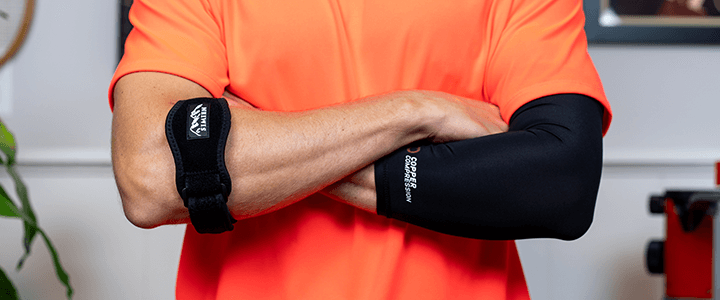What is Pasteur Pipette Dropper & it uses: 3 Best Techniques
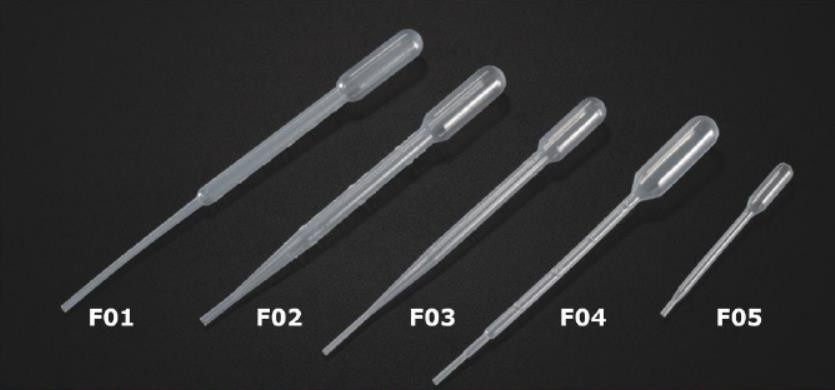
Pasteur pipettes are manufactured using carefully chosen medical-grade LDPE (low-density polyethylene) materials, making them well-suited for pipetting small volumes of liquids. These pipettes are designed with optimized surface tension to facilitate smoother fluid flow and enhance ease of handling during pipetting tasks.
Learning to use pipettes is a fundamental aspect of biology and chemistry laboratory courses. Pasteur pipettes are widely employed in laboratories, making it essential to have proper knowledge of their usage. While it may appear straightforward, it is crucial to master the correct technique as it impacts experimental outcomes. This article aims to guide the correct utilization of Pasteur pipettes.
What is a Pasteur Pipette?
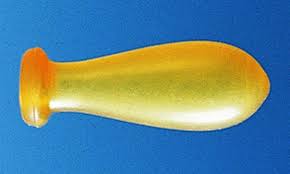
The Pasteur pipette, similar to the Beral pipette, is a slender glass transfer pipette. It relies on a disposable rubber bulb to draw and dispense the sample. The narrow stem of the Pasteur pipette enables greater precision and accuracy, particularly for small-volume transfers, when compared to the Beral pipette.
Typically, the volumes on the stem of pipettes are indicated, although the markings are generally basic and not highly precise.
Louis Pasteur, a renowned scientist of the 19th century credited with the discovery of the pasteurization process, is also recognized for his contribution to the field of liquid handling tools. The pipettes known as “Pasteur Pipettes” were named in his honor.
An eye dropper, also called a Pasteur pipette or simply a dropper, is a device used to transfer small quantities of liquids. They are used in the laboratory and also to dispense small amounts of liquid medicines.
The introduction of plastic materials played a significant role in advancing the development of pipettes and expanding their utilization across various applications.
Features:
- These Pasteur pipettes offer excellent transparency, allowing for easy observation of the liquid inside, with visible tick marks for accurate measurements.
- They possess a certain degree of elasticity and plasticity, enabling them to bend at specific angles, which is advantageous for accessing micro-containers during liquid extraction or addition.
- The pipettes have superior elasticity, reducing the risk of breakage and facilitating quick and precise pipetting. They are user-friendly, reliable, and exhibit good repeatability in drop volume.
- The disposable Pasteur pipette tips can be heat-sealed, ensuring secure conveyance of small quantities of liquids.
- They are lightweight and compact and they minimize the consumption of consumables. As a single-use item, they reduce raw material pollution during their usage.
- These pipettes have a smooth and transparent surface, minimizing liquid adhesion, while their elasticity and accurate scale make pipetting easy and precise.
- The small tips of these pipettes ensure consistency in drop size, and the tube ends can be heat-sealed for convenient liquid handling.
- The translucent and bright white infusion tube body enables ideal liquid flow on the tube wall, providing robust control during pipetting.
- These disposable sterile pipettes are slender, flexible, and bendable, allowing easy access to micro or specialized containers.
- They are commonly used for tasks such as absorbing, transferring, or carrying small volumes of liquids.
- The slim and soft tube body is translucent, facilitating ideal fluidity and strong controllability.
- The sterilization method for these pipettes is ethylene oxide (EO) disinfection and sterilization.
How many mL is a Pasteur pipette?
| Vol. | 1 ml |
|---|---|
| Filling capacity | 2.1 ml |
| Total volume | 3.9 ml |
| Graduation range | 0,25 / 0,5 / 0,75 / 1 ml |
| Total length | 140 mm |
Preparation of pasteur pipettes:
To prepare a Pasteur pipette, follow these steps:
- Hang the Pasteur pipette below an oil burner.
- Heat the tip of the pipette using the flame.
- Use a calibration slide and a dissection microscope to measure the internal diameter of the pipette. The scale bar on the microscope should be set to 200 mm.
Glass pasteur pipette:
A glass Pasteur pipette is a type of pipette made from glass material. It is commonly used in laboratories for transferring small volumes of liquids. Glass Pasteur pipettes offer advantages such as transparency, chemical resistance, and ease of sterilization. They are often used in various scientific disciplines, including biology, chemistry, and medicine.
Uses of Glass Pipettes
- Chemistry laboratory: Glass pipettes are essential for transferring liquids during different procedures in the chemistry laboratory. Volumetric pipettes are particularly useful in volumetric analysis tests.
- Pharmaceutical industry: Glass pipettes play a crucial role in the pharmaceutical industry, specifically in drug production. They are used for transferring measured volumes and are important for quality control processes.
- Microbiology laboratory: Glass pipettes, similar to droppers, are utilized in the microbiology laboratory to transfer various chemicals in milliliter (ml) quantities for different experiments.
-
- Biochemistry laboratory: Glass pipettes have several important applications in the biochemistry laboratory, including:
- Preparation of buffer solutions.
- Transfer of solutions for conducting various biochemical tests.
- Accurate measurement of chemicals during experiments.
Pasteur pipette bulb
A Pasteur pipette bulb is a detachable rubber or silicone bulb that is used to create suction and control the flow of liquid when using a Pasteur pipette. The bulb is typically attached to the top of the pipette and is squeezed or released to draw in or dispense liquid. It provides a convenient and ergonomic way to manipulate the liquid during pipetting, allowing for precise and controlled transfers.
It is available in different types, including general-purpose bulbs, three-valve bulbs, and plastic thumb wheel fillers.
Steps for using a three-valve pipette bulb:
- Attach the pipette to the insertion part.
- Simultaneously press valve A and the bulb to release air from the pipette and create a vacuum.
- Insert the pipette tip into the container holding the liquid.
- Use the vacuum created to aspirate the liquid by pressing the S valve located at the bottom.
- Position the pipette tip over the desired container to dispense the liquid and press valve E.
Plastic pasteur pipette:
A plastic Pasteur pipette is a type of pipette made from plastic material, typically disposable, and used for transferring small volumes of liquids in laboratory settings. Plastic Pasteur pipettes offer advantages such as convenience, disposability, and reduced risk of cross-contamination. They are lightweight, easy to use, and often come in pre-sterilized packaging. Plastic Pasteur pipettes are commonly used in various scientific applications, including biology, chemistry, and microbiology.
Disposable pasteur pipette:
A disposable Pasteur pipette is a plastic pipette designed for single-use purposes. It is pre-sterilized and individually packaged, providing convenience and eliminating the need for cleaning or sterilization. These pipettes are commonly utilized in laboratories for transferring small liquid volumes while minimizing the risk of cross-contamination. After use, the entire pipette is discarded, ensuring reliable and consistent results while reducing the potential for contamination.
Transfer pipettes, also known as Pasteur pipettes, are used for transferring small volumes of liquids. Plastic bulb pipettes are not typically suitable for precise measurements, while glass pipettes can offer high precision. The accuracy of measurement with a glass pipette depends on the length and thinness of the tip. In terms of cost, glass pipettes are often considered inexpensive enough to be disposable. However, if the glass tip is undamaged, a Pasteur pipette can be washed and reused indefinitely. The stem of the pipette usually has volume markings, although these markings may not be highly accurate.
Calibrated Pasteur pipette:
A calibrated Pasteur pipette is a type of pipette that has volume markings or graduations along its stem to indicate the amount of liquid being transferred. These markings allow for precise and accurate measurement of liquid volumes. Calibrated Pasteur pipettes are commonly used in laboratories when precise control over the volume of liquid being transferred is required. The markings on the pipette stem enable users to easily measure and dispense specific volumes, ensuring reproducible and reliable results.
Proper Pipet Technique:
Pasteur pipettes should be held in a vertical or nearly vertical position during use. The bulb is positioned at the top, while the tip of the pipette points downward.
It is crucial to avoid holding a filled pipette upside down or horizontally. Holding it in such a manner would cause the liquid to flow into the bulb, resulting in undesirable consequences.
- A dirty bulb should not be reused, as it would result in wasting the pipette and the associated cost (e.g., 39 cents).
- Continued use of a dirty bulb will lead to rapid discoloration, cracking, drying, and overall damage to the bulb.
- Reusing a dirty bulb would allow any residual chemicals from previous use to mix with the new solvent, resulting in contamination of the new solvent.
- Misusing a saturated bulb can lead to unintended exposure to hazardous chemicals for gloveless individuals.
- Contact between a clean bulb and any solvent can cause the leaching of compounds naturally found in the rubber bulb, leading to contamination of the solvent and subsequent reactions.
How to Use Pasteur Pipette
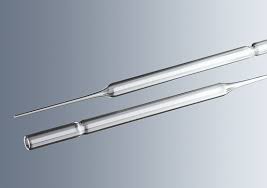
To ensure proper use of a Pasteur pipette, remember to always keep the bulb positioned on top and avoid reversing its orientation during use. Additionally, select the appropriate volume pipette for your operation. Maintain a vertical orientation, with the bulb on top, the pipette tube at the bottom, and the tip pointing downward.
Once in the correct position, squeeze the top bulb of the Pasteur pipette and insert the tip into the solution to be transferred. Gradually release the top bulb to draw the sample into the pipette. Use the volume markings on the side to determine when to stop aspirating.
Exercise caution to prevent the solution from entering the top bulb of the Pasteur pipette. The selection of an appropriate pipette size is crucial. It is recommended to practice with water to determine the correct pressure and technique for optimal usage.
Lastly, remove the pipette from the solution and transfer the sampled liquid to the desired receiving container.
To ensure a seamless workflow, selecting the appropriate volume of Pasteur pipette is crucial. Hawach offers a range of sizes, including 1mL, 2mL, 3mL, 5mL, and 10mL, to cater to various capacity requirements. Hawach Pasteur pipettes are known for their quality and reasonable pricing, making them a favorable choice. These pipettes are widely used in molecular biology and biochemistry laboratories as essential consumables. Mastering the correct use of a Pasteur pipette is vital, and we hope that everyone’s experiments proceed smoothly as intended.
Pasteur Pipette Applications
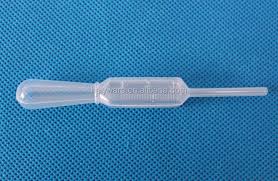
1. Sample Separation:
After centrifugation of a person’s blood in a test tube at a designated speed and duration, the heavier components, such as erythrocytes and leukocytes, settle at the bottom of the tube, while the lighter serum or plasma remains in the upper portion (supernatant).
To collect the serum, a Pasteur pipette is used to aspirate the clear liquid from the top of the tube. The collected serum is then transferred into vials for further laboratory testing as needed for the patient.
2. Inoculation
It can be used to aseptically transfer a biological sample into a sterile culture medium for inoculation purposes.
3. Chromatography mini columns
Plastic Pasteur pipettes can be modified for use in chromatography, such as ion exchange. The bulb of the pipette can be partially or entirely removed. In this application, the sample is allowed to permeate through the chromatography medium, and certain components adhere to the chromatography resin. To elute these components from the column, a buffer is supplied through the upper part of the Pasteur pipette, which acts as a chromatography column. Gravity facilitates the descent of the buffer (elution liquid) through the column.
4. Purification of liquids
In chromatography applications, Pasteur pipettes can be employed for liquid purification by incorporating materials like glass wool or activated carbon. These materials serve to capture contaminants present in the liquids, facilitating their purification process.
5. Storage material
The material drawn into a Pasteur pipette can be retained by sealing the tip of the pipette with a flame. The remaining liquid in the pipette can be stored in the freezer until it can be processed appropriately.
6. Medicine administration
The Pasteur pipette can be utilized as a dropper to administer medications to specific areas such as the ear, nostrils, eyes, or oral cavity, depending on the intended application.
References
- The Wikipedia page on eye droppers provides information about the tool used for transferring small amounts of liquid.
- Alpha Laboratories has an article on the history of Pasteur pipettes, discussing their development and usage.
- The National Museum of American History has a page dedicated to Pasteur pipettes, providing historical information and showcasing their significance.
- Deltalab’s website features glass Pasteur pipettes among their product offerings.
- EVS Translations has a “Word of the Day” post about pipettes, highlighting their importance in various industries.
Read More:

